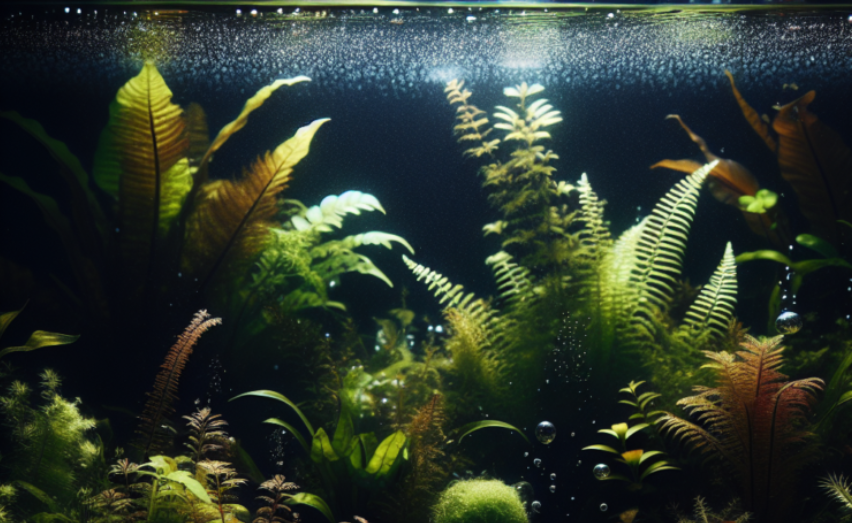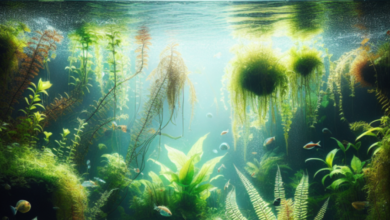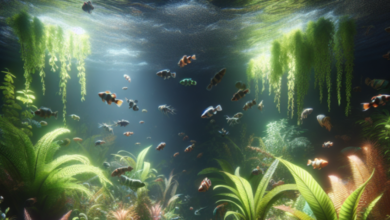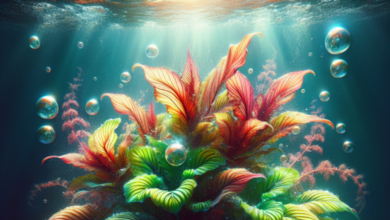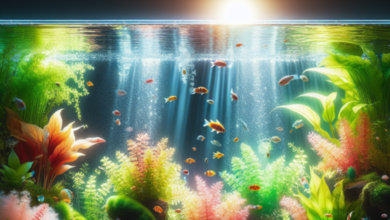Introduction
When it comes to creating a stunning aquarium, one key element that often gets overlooked is the choice of plants. While many aquarium owners focus on the fish and decorations, the right selection of plants can truly transform your underwater haven. However, not all plants thrive in the same conditions, and some aquariums may have limited lighting options. That’s where low light aquarium plants come into play. In this article, we will explore the world of low light aquarium plants, their benefits, and provide you with a comprehensive list of the best options available.
Understanding Low Light Aquariums
Before we dive into the best low light aquarium plants, let’s first understand what makes an aquarium qualify as “low light.” In general, low light aquariums have limited access to natural or artificial light sources. This could be due to the location of the aquarium or a deliberate choice to create a dimly lit environment. Low light conditions can present a challenge for many plants, as they rely on light for photosynthesis, a process essential for their growth and survival.
The Benefits of Low Light Aquarium Plants
While low light aquariums may seem limiting, they offer some unique advantages. Firstly, low light aquariums often require less maintenance compared to high light setups. This means less frequent trimming and pruning, allowing you to spend more time enjoying your aquarium rather than tending to it. Additionally, low light aquarium plants tend to grow at a slower pace, reducing the risk of overgrowth and the need for constant rearrangement.
Choosing the Right Low Light Aquarium Plants
When selecting plants for your low light aquarium, it’s crucial to choose species that are specifically adapted to thrive in such conditions. Here are some of the best low light aquarium plants to consider:
1. Java Fern (Microsorum pteropus)
The Java Fern is a popular choice among aquarium enthusiasts due to its hardiness and adaptability to low light environments. This plant features beautiful, broad leaves that provide a natural and lush look to any aquarium.
2. Anubias (Anubias barteri)
Anubias is another excellent option for low light aquariums. This plant is known for its attractive, dark green leaves and can tolerate a wide range of light conditions, making it ideal for beginners.
3. Cryptocoryne (Cryptocoryne spp.)
Cryptocoryne plants are renowned for their ability to thrive in low light environments. They come in various sizes and colors, adding a touch of diversity to your aquarium. These plants are relatively low maintenance and can tolerate a range of water parameters.
4. Java Moss (Taxiphyllum barbieri)
If you’re looking to create a lush, carpet-like effect in your aquarium, Java Moss is an excellent choice. This plant requires minimal lighting and can attach itself to various surfaces, making it versatile and easy to manage.
5. Marimo Moss Balls (Aegagropila linnaei)
Marimo Moss Balls are unique spherical algae that require very low light levels. They are not only visually appealing but also help to maintain water quality by absorbing nitrates. These plants are a great addition to any low light aquarium.
Maintaining Low Light Aquarium Plants
Now that you have an idea of the best low light aquarium plants, let’s explore some essential tips for their maintenance:
1. Lighting Considerations
While low light plants can survive with minimal light, it’s crucial to ensure they receive some form of illumination. Consider using low-intensity LED lights specifically designed for low light aquariums to provide the necessary light spectrum for plant growth.
2. Nutrient Supplements
In low light conditions, plants may struggle to get sufficient nutrients solely from the water and substrate. Using liquid fertilizers or root tabs can help provide the necessary nutrients, ensuring healthy plant growth.
3. Pruning and Trimming
Although low light plants grow at a slower pace, occasional pruning and trimming are still necessary to maintain their shape and prevent overcrowding. Remove any dead or decaying leaves promptly to maintain water quality.
4. Proper Water Parameters
Low light plants tend to be more forgiving when it comes to water parameters. However, it’s still essential to maintain stable conditions, including temperature, pH, and hardness, to promote optimal plant growth and overall aquarium health.
Conclusion
Creating a captivating aquarium with low light conditions is entirely achievable by selecting the right plants. The list provided above offers a starting point for your low light aquarium journey. Remember to consider the lighting requirements, maintenance needs, and overall aesthetic appeal of each plant before making your final decision. With proper care and attention, your low light aquarium plants will thrive and enhance the beauty of your underwater oasis.
FAQ
Q1: Can I use regular aquarium plants in a low light setup?
While some regular aquarium plants may tolerate low light conditions, it’s best to choose plants specifically adapted to thrive in low light environments. This ensures better growth and overall health.
Q2: How often should I fertilize low light aquarium plants?
The frequency of fertilization depends on the specific plants and your aquarium setup. Generally, low light plants benefit from weekly to bi-weekly fertilization using liquid fertilizers or root tabs.
Q3: Can I keep low light and high light plants together in the same aquarium?
It’s possible to keep low light and high light plants together, but it requires careful planning. Be mindful of the lighting requirements of each plant and arrange them accordingly to provide suitable conditions for all.
Q4: Do low light aquarium plants require CO2 injection?
Most low light aquarium plants do not require CO2 injection. However, adding a CO2 system can enhance their growth and overall health, especially in heavily planted setups.
Q5: Can I grow low light aquarium plants without a substrate?
While a substrate is not essential for low light plants, it can provide them with anchorage and access to additional nutrients. Consider using a nutrient-rich substrate to support their growth and overall well-being.
